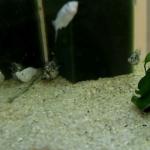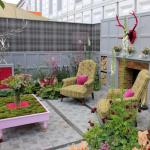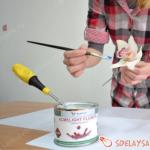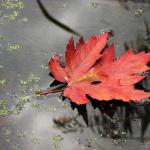Soil for indoor flowers: characteristics and preparation at home
Indoor flowers are in the house for many. Sometimes housewives are faced with a lack of flowering and withering of indoor flowers. This is because the rules for caring for them are not followed, and there is also no good soil in which the flowers could feel comfortable. We will talk about the features of the soil for indoor flowers and the specifics of self-preparation of such soil in this article.
Rules for selecting soil for indoor flowers
Primer for flowers is selected in accordance with the individual characteristics of the indoor flower. Naturally, when transplanting indoor plants in the autumn, the question arises, what is the best soil for flowers? There are a great many such soils in flower shops, but are they so favorable for?
We want the vegetation on the windowsill to please us with beautiful and abundant flowering, green and lush foliage. Soil for indoor flowers should be as balanced and fertile as possible, it must comply with the norms of acidity and. You can also choose this option in the store, but we want to consider the features of preparing soil for indoor flowers at home.
Advantages of soil for flowers with their own hands

Primer for flowers cooked on its own has several significant advantages. You yourself can add to it all those components that will be optimal for your flower garden. Soils for flowers, which are sold in stores, basically contain peat, which is diluted with useful minerals and trace elements.
Often such soils are called universal, they are suitable for almost any plant. But along with these advantages, store-bought peat soil for flowers also has an unpleasant feature - peat has a high moisture capacity and, with insufficient watering (or its long absence), it simply shrinks and dries out somewhat.
These processes provoke exfoliation of the soil mixture from the walls of the flower pot, dried peat mixtures are subsequently very difficult to soak, they do not absorb water and this has a very detrimental effect on flowers. That is why potting soil better to make your own.
Self-prepared soil for indoor flowers will not be so picky about some of the mistakes of caring for such vegetation. Also potting soil, prepared independently, in its composition is closer to natural and natural soils and therefore will be softer and unpretentious in use.
The main components of the soil for indoor vegetation

Primer for flowers self-preparation provides for a preliminary acquaintance with all the components that must be present in such a mixture.
- turf (turf land) - to prepare such land for your flower pot, you need to spend several years. To begin with, the top layer of soil is taken from fertile meadows and fields. Then these layers must be folded in an even layer somewhere in a secluded place and mixed with.
Meadow land must be taken at the very beginning of summer or throughout spring. Then the prepared land will be maximally saturated with useful substances. Before laying such soil in flower pots, it must be well sieved. Such an earthen mixture can be replaced with well-fertilized garden soil.
- potting soil should also contain leaf ground. This component is formed by the decomposition of the leaves of various trees (mainly apple, ash and linden). The leaves are collected in late autumn, when the fall of the leaves has died down. They are mixed with slaked lime to form compost. When the leaves are well rotted, they can be used as soil additives for indoor flowers.
- sand also refer to those components that should be present in good soil for indoor plants. Primer for indoor flowers containing sand, will provide the roots of plants with a sufficient amount of air. Also, sand is an excellent permeable material, which means that it is thanks to the sand that the plants in the room will receive a sufficient amount of moisture.
- humus and peat can also be added to potting soil. At the same time, peat can be bought at flower shops or at special bases. It is harvested in special bags, but it must decompose well before use, be soft and crumbly. Only such peat will ensure the vital activity of your plants.

Humus is prepared on the basis of cow or horse manure, which has been prepared for two years. Manure is simply collected in one place, covered with thick oilcloths or fabric materials and overheated for a long time. After readiness, it is simply sifted and mixed with the soil for flowers.
Good manure-based humus will be crumbly, with a uniform structure, without a strong odor.
For some plants (orchids, ferns), additives in the form of crushed bark of coniferous trees can be used (it is simply removed from old coniferous trees, boiled and crushed). Then the bark is simply mixed with the main components of the soil prepared for flowers.
Near coniferous trees, you can also take the upper layers of soil, along with coniferous litter. This composition can be composted together with a peat-sand mixture. When planting orchids, you can use impurities from the roots of fern crops, previously well crushed.
You can also add sphagnum to the prepared soil. It can be collected in the autumn in the fall in the swamps, and you can also just buy sphagnum in specialized flower-themed stores. Adding charcoal will help loosen the soil and reduce souring.
As additional components, you can add wood ash and horn shavings to the soil for indoor plants (you can purchase these components at flower shops, you can cook it yourself.)
Thus, if there is a choice, what is the best soil for flowers, give preference to soils prepared independently from proven and high-quality components. Then your indoor garden will delight the eye with the beauty and splendor of flowering.
Igor Serba, member of the editorial board of the Sobcorrespondent of the Internet publication "AtmAgro. Agroindustrial Bulletin"




